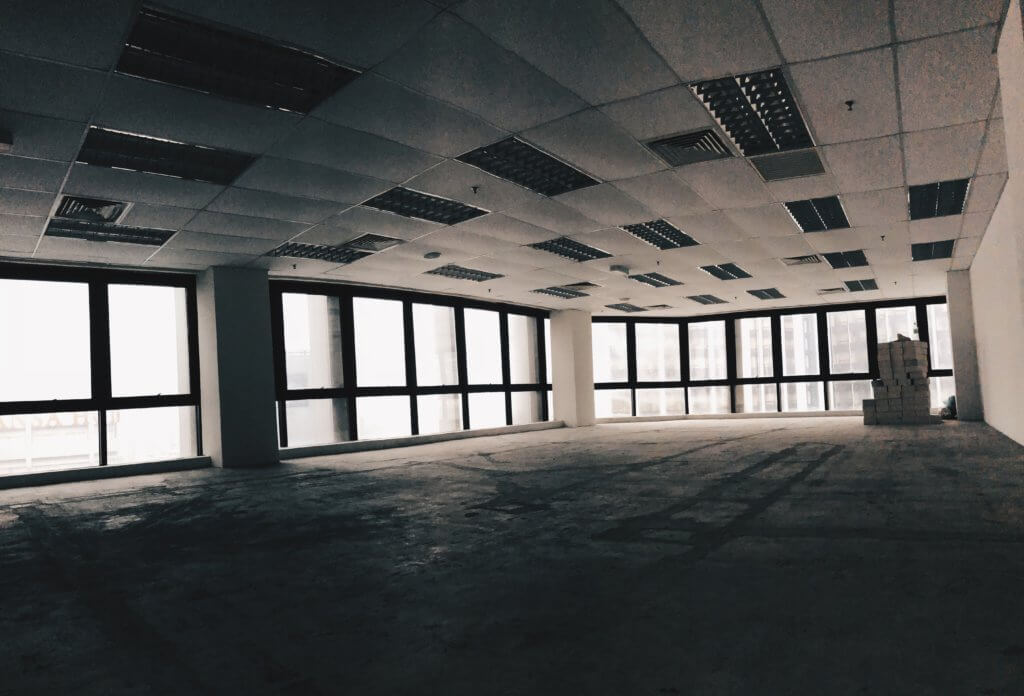Big opportunities are waiting to be found in your excess capacity. Capture additional revenue with few additional costs.
New profits lie hidden unless you know where to look. What machines are quietly idle while others are a flurry of productive activity? Has an employee said they are “ready for a new challenge” or “not being used to their full potential”? What’s tucked in the corners of the warehouse and starting to gather a little dust?
Excess capacity can be created and tapped when you are growing. Other times it means turning recession lemons into lemonade – or maybe second-label wine. The demand for expensive wine dropped off significantly during the Great Recession. Wineries could have reduced the price of their flagship wines to prop up their sales but this would destroy their brand in the long run. Instead, many created second labels with lower price points to sell their excess wine.
How excess capacity from growth creates opportunities

You have excess capacity when you have people, equipment, real estate, or other resources that aren’t being used to their potential. This often occurs when you are scaling from one production rate to a significantly higher or lower production rate. Here are a few examples of excess capacity from company growth:
- You’re looking for a new building. You find an incredible building with an amazingly low price but it’s so big you currently only need half of it. You may need the other part of the building in future years. This may be a great opportunity to lock up a cheap resource now until you need the full building. You can rent out the unused part until you need it for your operations.
- Your current equipment is reaching capacity or getting old. You could buy new equipment but know that you don’t need all the production capacity of the new equipment. There may be new revenue sources to tap with the excess capacity of the new equipment.
- Sales are exploding with the constant need for additional staff. Rather than hiring enough staff to meet your immediate needs, you can hire more staff the projected needs. These staff can write procedures while they are training. This documentation is critical for training future staff and for sharing best practices among current staff. The new staff can also do projects to improve production processes. Your current staff are consumed with daily production and don’t have time for this. The new staff will then be fully trained and efficient when you need all their time for production. You can also use them to build new products or sell to new markets to test future opportunities.
The Deals are in the Downturns
The biggest profits are often captured or prepared for in downturns. Excess capacity can be tapped for temporary decreases in demand. Now is the time to build your capacity so you’re ready to capture opportunities when the economy starts to improve.
Your competitors may be forced to lay off staff when they cut their production during downturns. They must then rebuild once the economy improves. They train new staff and rebuild capacity while trying to keep up with the increased demand from the improving economy. Quality and customer service suffer. That’s a mistake. Their competitors seize market share while they scramble to catch up. Here are some examples of using excess capacity during slower times:
- Many seasonal industries find alternative revenue sources during their off-season. Hotels run specials on rooms. Landscaping companies plow snow during the winter.
- Economic downturns are excellent times for capital investments. For example, it’s much easier to implement a new software system when you aren’t struggling to keep up with sales. You can negotiate much better prices on equipment and software during slow economic times. Employees have more time available for training. They are then more efficient and more profitable when demand picks up again.
Maintaining “Dry Powder”

Many good companies experienced plummeting sales and low cash flow in the Great Recession. To them, the examples above were unrealistic. However, some thrived in the downturn. As a banker, I saw companies seize opportunities as their competition fell away. It all depends on your strategy and discipline when the market is hot.
Businesses often over-commit to growth during good economic times. They see opportunities for fast growth and set aggressive growth targets. Their staff, assets, and capital are stretched to the maximum.
These managers make the mental error of extrapolation. They think tomorrow promises the economic growth they need to pay for the big investments they are making today. When the economic cycle turns, as it always does, they are caught with losses and left scrambling to adjust down to the market’s reduced demand. As Warren Buffett said, “You only find out who’s swimming naked when the tide goes out.”
“You only find out who’s swimming naked when the tide goes out.”
Warren Buffett
That’s when you are ready to capitalize on their weakness. You can poach the best staff when your competitor’s employee morale suffers from layoffs and lack of sales. Equipment, land, and construction costs are all lower during a recession. Your vendors and suppliers are much more willing to make price concessions.
Investing During a Recession
Positioning yourself to reinvest in your business during a recession allows you to access cheap capital and desirable employees. You also have more bargaining power with vendors while receiving better customer service.
Interest rates often drop steeply during a recession, making financing much cheaper. Lenders are fighting for strong borrowers when your weak competitors don’t qualify for new financing. Equipment and inventory suppliers may provide favorable trade credit to sell their products. Building capacity at these low rates allows fatter future profits.
A recession is the time to reinvest in your company to be ready for future demand once good economic times return. Your employees aren’t scrambling to keep up with production during a downturn. They have the capacity to implement new software, equipment, and processes.
A 1972 Stanford study gave children the choice of one marshmallow immediately or two marshmallows if they waited a period of time. The ones who waited for two marshmallows had better life outcomes as they grew older.
The fools who grab every deal when the market is hot stuff a bag of marshmallows in their mouths. Then they’re sick during the downturn. You’re smarter than that and wait for two bags to enjoy at your leisure.

Excess Capacity from Profit in New Markets
Some managers miss opportunities because they’re confused about how to use their product profitability information. Let’s say they could sell their product at $10 per unit to a new customer or market. Their product profitability reports say their average unit cost is $12 per unit so they don’t do it. They missed an opportunity if they could produce more products from excess capacity.
They were looking at the wrong numbers. That unit cost is likely based on historical costs. That’s like driving your car looking at your rear-view mirror instead of your windshield. The only relevant costs are your future costs by producing additional units, which are called marginal costs. I go into more detail about marginal costs and revenues in this article.
Basing your decisions on historical costs is like driving your car looking at your rear-view mirror instead of your windshield.
If you have excess capacity, you truly have free (or very cheap) resources you can use. You’ve already made the investment in the machine or the people, so your future cost of production for them is zero. You can sell that production at very low prices like you would a “loss leader” to a new customer or market. Your costs are so low that you don’t have a “loss” leader – you have a “profit” leader!
The Dangers of Overestimating Capacity
Maybe you’re sold on the opportunities of excess capacity. You’re ready to look for it across your company. My caution to you is that it’s easy to overestimate or misuse your capacity.
Your business is a system where all the parts must be calibrated. Let’s say you want to ramp up production to tap your excess capacity in equipment or production staff. Your sales, customer support, or administrative staff may not have excess capacity to support this.

They will be begging for more staff once they’re struggling to keep up. You’ll have to hire new staff, reducing the profit margin you projected. Morale will suffer, which has long-term costs like employee turnover.
Assess your excess capacity across the entire system. Unfortunately, the truth is hard to find during planning.
- Some people underestimate themselves and their capacity.
- Some tell themselves what they want to believe. They lie to themselves about how much capacity there is in the company because they want profits so badly.
- Some need a cushion to underpromise and overdeliver.
- It’s easy to assume there’s excess capacity with people that don’t complain or whose contribution is underappreciated.
- You can’t foresee some needs until you hit their capacity.
You’ll never have absolute clarity, but you must decide. Waiting for clarity before acting is deciding not to act. Cautiously discount what you hear, but hear from everybody that’s part of the entire process.
You’ll never have absolute clarity, but you must decide. Waiting for clarity before acting is deciding not to act.
The Hidden Losses of Cannibalization
Cannibalization occurs when you reduce your price to existing customers instead of selling to them at your old price or at a higher price. For example, let’s say you usually sell your widgets at $100 but you lower the price to $90 to drive growth. If you normally sell 1,000 widgets, your profit dropped $10,000 ($100-$90=$10 X 1,000).
A classic error is forgetting to include cannibalization in profit estimates. Lowering prices to capture the profits in excess capacity may backfire if you have high cannibalization. You may sales may not increase enough to cover the cost of the price reduction to all your existing customers. I have an article that goes into this in more detail.
A way to avoid cannibalization is to sell additional products to new markets where you won’t undercut your existing sales. This is what the wineries mentioned above did.
Selling to New Markets at Reduced Prices is a Temporary Strategy
When selling to new markets at reduced prices, keep enough capacity to accommodate future growth in your primary market. A boom in sales in the secondary market forces a big choice:
- Spend money for added capacity?
- Slow sales to the alternative market to free up your current capacity for the higher revenues in your primary market?
You’re better deciding this before entering the alternative market rather than when you are tight on capacity. Raising prices in the new market may hurt your brand more in the long run that the short-run profits you made trying to utilize excess capacity.
Pick alternative markets or products where you can easily enter, slow down, and exit without damaging long-term relationships. They are usually markets where customers always choose the lowest price from many potential vendors. They are low-margin markets, which is why they weren’t your best primary revenue opportunity in the first place.
Digging for Gold

Both growth and downturns provide excess capacity that you can temporarily tap for profits. You may find a vein of excess capacity gold when you dig into your operations. It also allows you to smooth out peaks and valleys in production. Reducing your volatility while increasing profits greatly increases the value of your company.
For more info, check out these topics pages:
